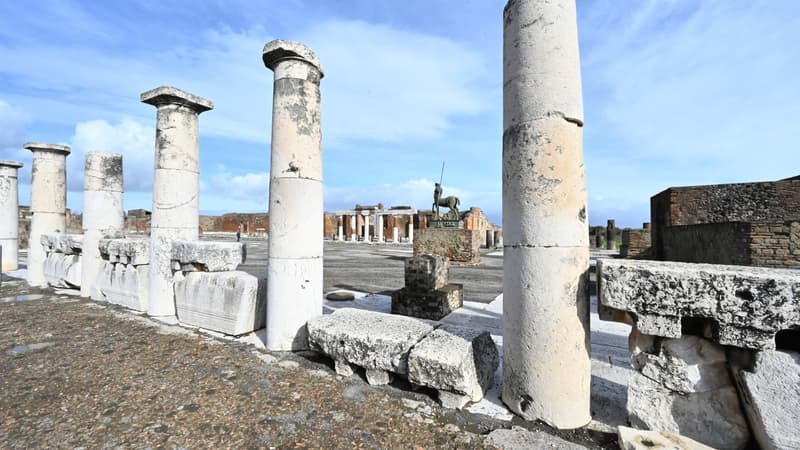Archaeologists from the ancient Roman city of Pompeii have discovered a house with finely preserved frescoes of mythological scenes, including some erotic ones, the management of the archaeological site located near Naples in southern Italy reported on Thursday, October 24.
The residence, nicknamed “House of Phaedra”, in homage to the mythological queen of Athens who appears in one of the murals, highlights the evolution of architectural styles during the 1st century AD
Unlike most of the houses excavated at the site, this one was not built around the traditional Roman atrium. Despite its small size, “we are surprised by the high level of decoration on its walls,” the archaeologists say in a press release.
The frescoes found are of similar quality to those that decorate other much larger and more opulent houses.
In addition to the fresco where we can see Phaedra, scantily dressed with her stepson Hippolytus, whom she supposedly accused of rape after rejecting his advances according to Greek legend, other brightly colored mythological scenes were discovered that adorn the walls of the house.
Preserved despite time and the eruption of Vesuvius
One of them represents sexual relations between a satyr and a nymph. As The Guardian recalls, numerous erotic drawings and sculptures were exhibited in Pompeii, without this constituting a provocative connotation.
Another fresco highlights gods who, according to the Pompeii archaeological site, could be Venus and Adonis. There are also many motifs and scenes of nature. If they are smaller in size, they are preserved in their entirety, despite time.
The city of Pompeii and the surrounding countryside of the Campania region were engulfed in volcanic ash during the eruption of Mount Vesuvius in AD 79. The eruption killed thousands of Romans who did not know they lived there in the shadow of one of the volcanoes. bigger. continent. The city was buried under a thick layer of ash, reducing many of its inhabitants and buildings to statues.
Source: BFM TV


